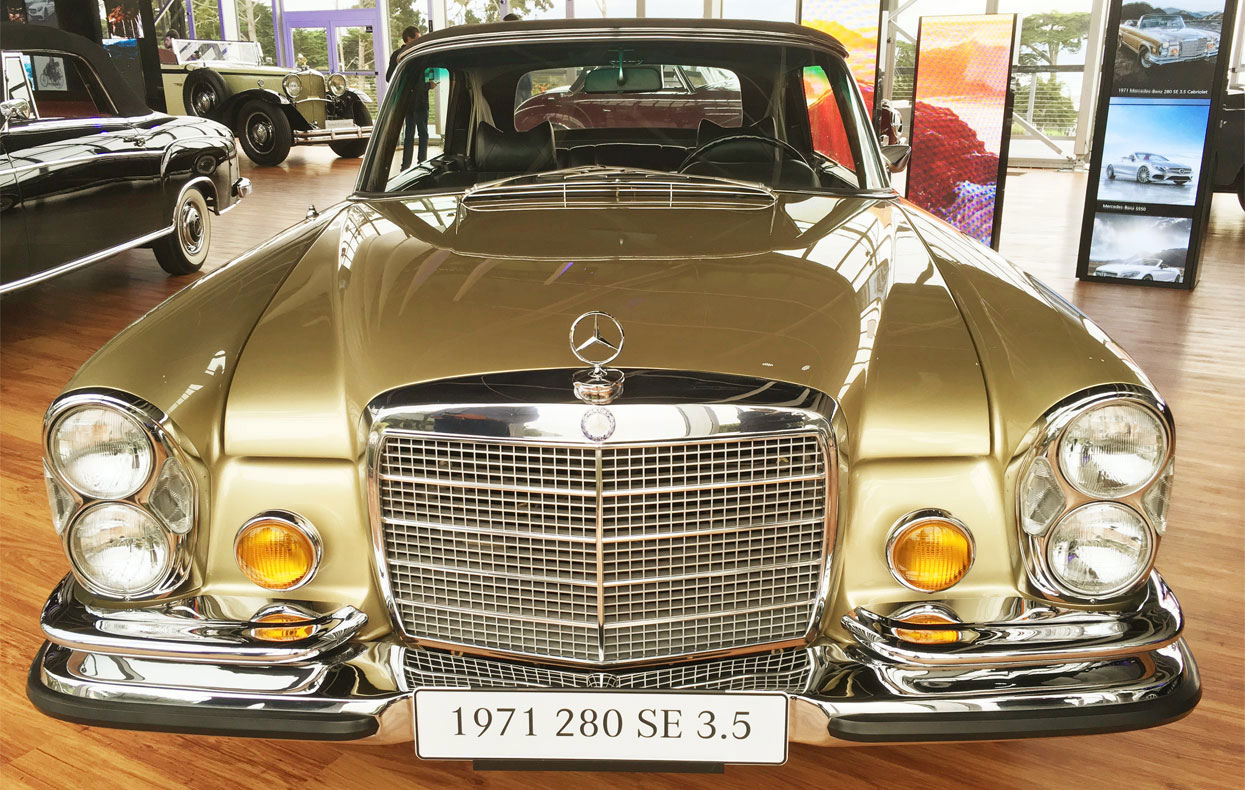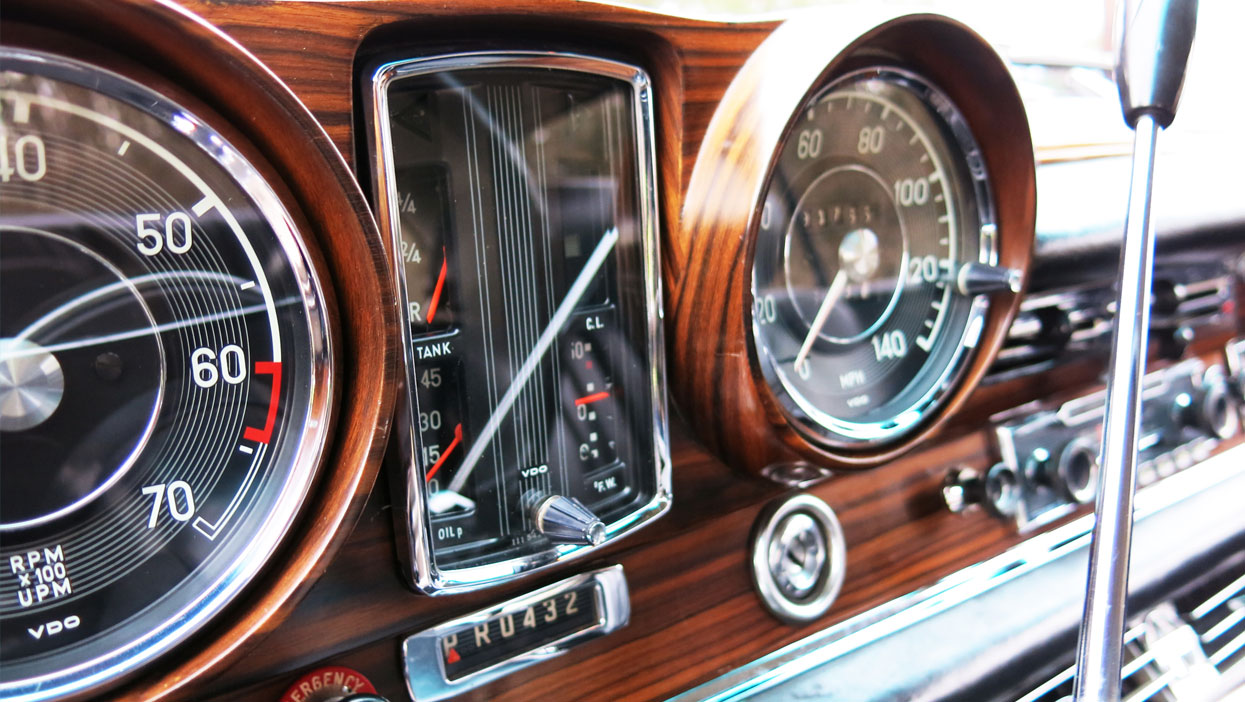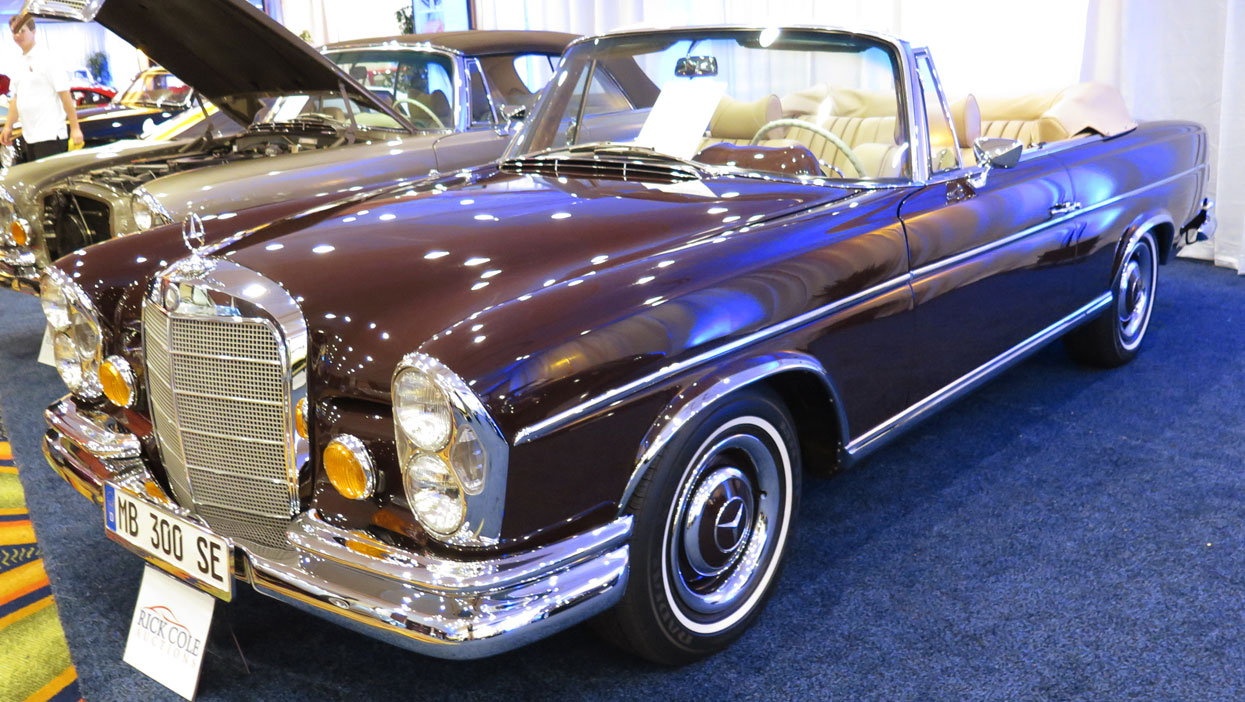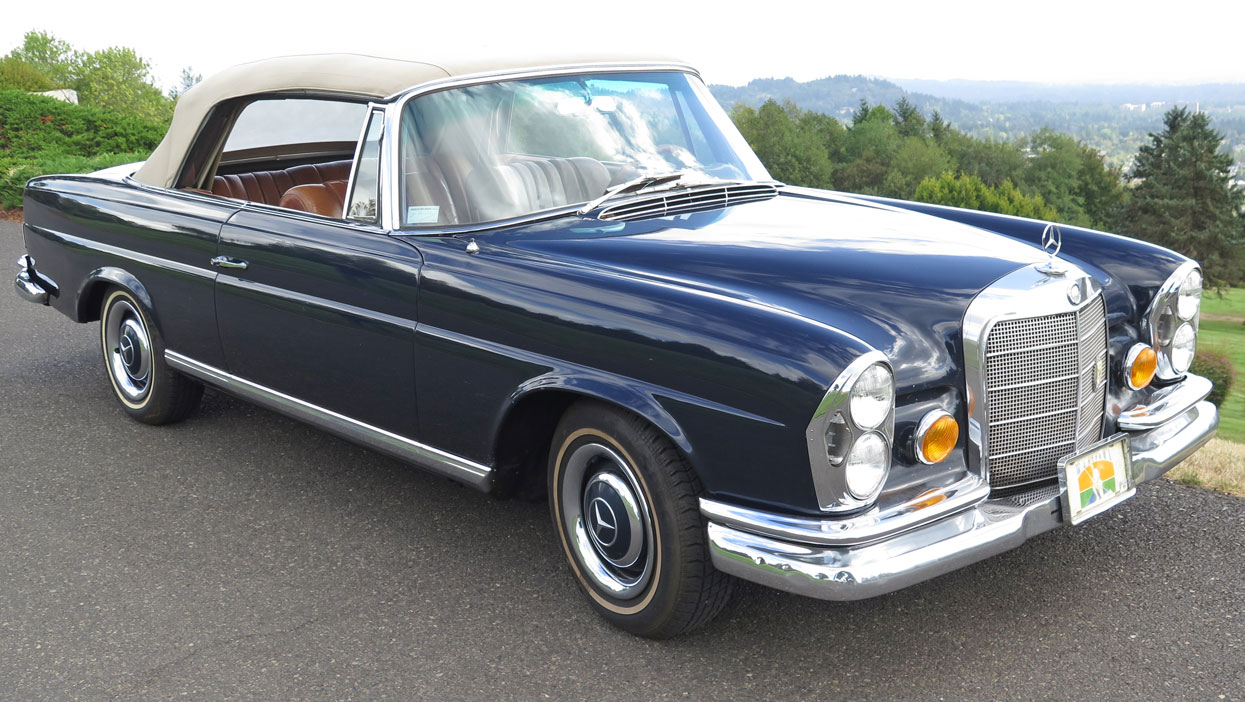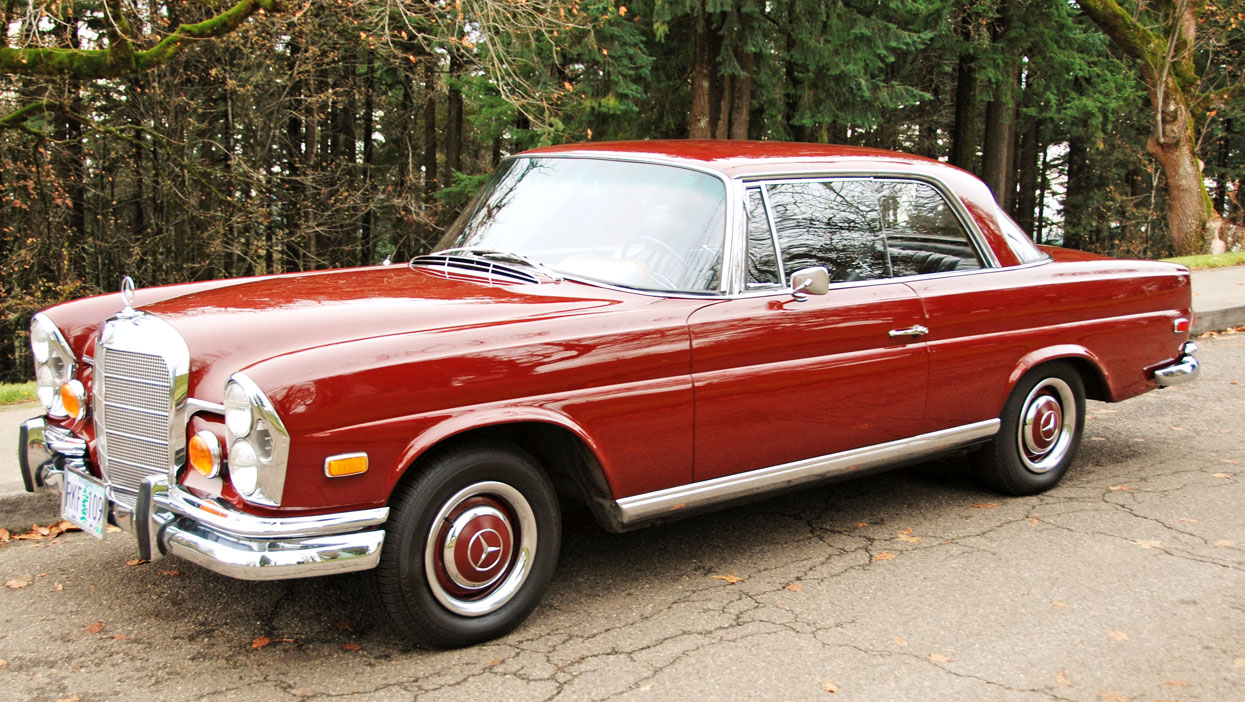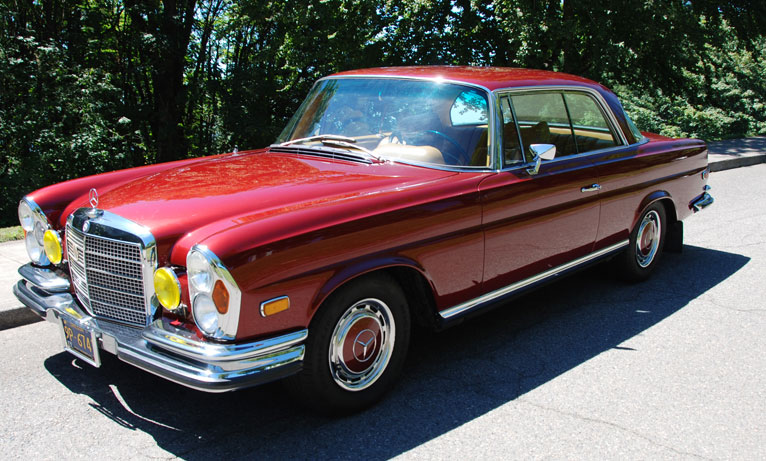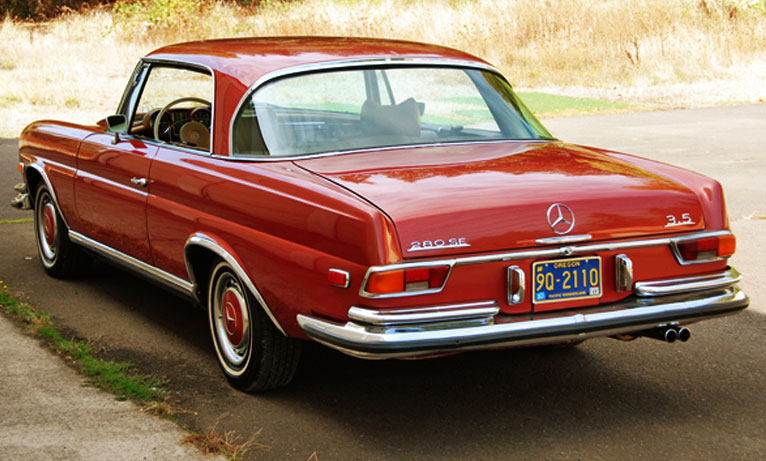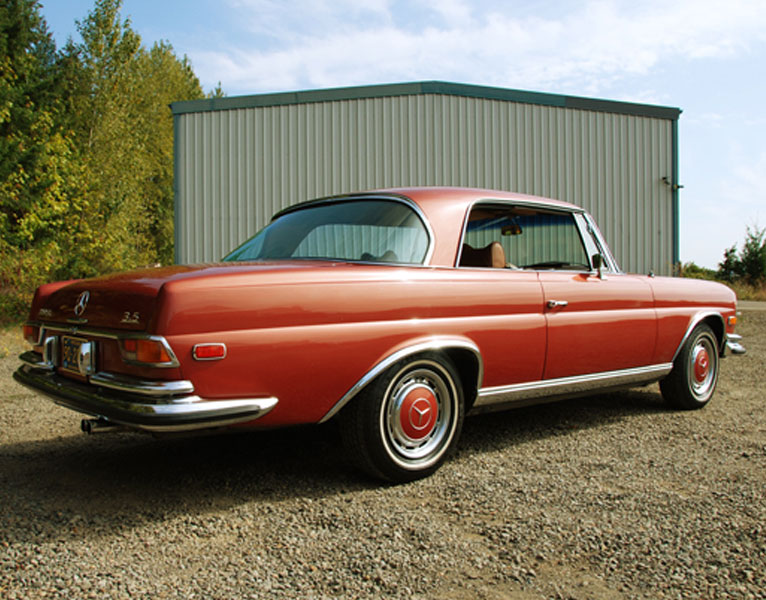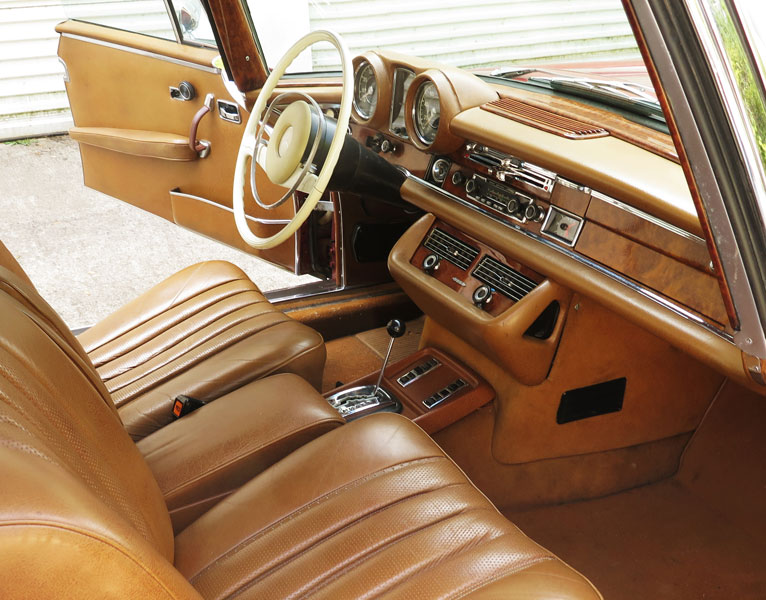Story and Photos Mike Spicer
To me the Mercedes-Benz W112/W111 coupes and convertibles are some of the best looking cars ever made. Every time I see one at a car show or on the road they capture my attention with their class, elegance, and engineering all wrapped into one package.
In 1957 the American car market was all about large fins, bigger is better was the theme of the day. That same year Paul Bracq became head of the Mercedes-Benz design studio in Sindelfingen and one of his sketches was a pillarless coupe with some American influences. This sketch was the beginning of the coupe we have today. In 2005 I was fortunate enough to meet Mr. Bracq and he explained his approach to continue the line of the rear fenders and slope the trunk lid down creating a subtle fin effect. When I look at the car I don’t think fins at all I just like the balance which is what good design does. This subtle approach has proven the test of time and in my opinion it is one of the most beautiful cars ever built.
While all W112/W111 coupes and convertibles look similar they evolved over time and It can get a bit tricky (took me a while) to understand all the differences. The W112 and the W111 chassis overlapped during production as Mercedes-Benz implemented new technologies. One of the main ways to differentiate cars through the years is by the engine changes. Cars with different engines carry a different trunk badge. Here is a quick overview so next time you’re attending Legends of The Autobahn in Monterey CA or your local car show you will be able to mix it up with the judges at the lunch table.
300SE Coupe and Convertible 1962–1967
This is a W112 chassis car and its main differences from the W111 cars are its air ride suspension and engine. It uses a similar engine that the famous 300SL gullwing used hence the 300SE trunk badge. You can also spot these cars since they all have a long chrome trim strip down the middle of the each side of the car.
220SE Coupe and Convertible 1961–1965
The 220SE has an early 120 HP six cylinder engine and a 220SE trunk badge. Note: In 1958-1960 Mercedes-Benz also used the same 220SE trunk badge on their W128 “Ponton” vehicles which is a completely different car. Just in case you are at a car show and trying to identify cars by the trunk badge.
250SE Coupe and Convertible 1965–1967
Trunk badge now says 250SE as cars are fitted with an improved 150 HP six cylinder engine and 14-inch wheels to accommodate larger disk brakes. In 1966 Congress passes safety legislation requiring mandatory seat belts. This is also when you start to see the large bumper overrides.
280SE Coupe and Convertible 1967–1971
The 280SE six cylinder engine gets a boost to 160 HP. The 300SE is retired from the lineup as the new 280SE could out preform it. Taillight lenses are changed adding a brighter orange turn signal on the outside ends. By 1968 you see side markers on all four fenders as safety regulations required. The three piece wheel cover setup is replaced by a single hubcap that is often accompanied with a thin white wall tire for a modern elegant look.
280SE 3.5 Coupe and Convertible 1969–1971
By this time the V8 M116 engine development had been completed and Mercedes-Benz was ready to start adding it to the lineup. The 280SL Pagoda being produced at this time was a bit small to accommodate the new engine (though a few modern restoration shops have proved they could squeeze one in). The large W111 engine bay was a perfect match for the new 200HP power plant and with plenty of torque the big coupe was now able to get up to speed quickly with a full load. Cosmetic changes inside consisted of a large A/C unit over the center console and leather wrapped speedometer bezel. On the outside front and rear bumpers incorporate a rubber strip to remove the need for large bumper overrides. A new lower grille is achieved by slanting down the front of the hood and raising the front bumper a few inches. This “low grille” gives the car a more modern look and is parallel to other styling cues in the design department during this time. Now this is where it gets tricky. While the low grille 3.5 coupes and convertibles were being produced some cars were fitted with the 280SE six cylinder engine. The only noticeable difference on the outside of the car is the trunk badge. The 3.5 cars have a 280SE badge on the left and a 3.5 badge on the right while the six cylinder “low grille” cars only have the 280SE badge.
The 3.5 convertibles are high on the food chain for collectability due to being the last hand-built Mercedes-Benz using traditional coach building techniques. The $14,155 price tag back in the day made them exclusive and resulted in low production numbers which means collectability or ‘Blue Chip’ investment. The 3.5 has style, performance, quality, and rarity. Everything one looks for in a collector car. Drive one and even if you don’t feel like a 70’s pop icon you’ll still be very satisfied.

